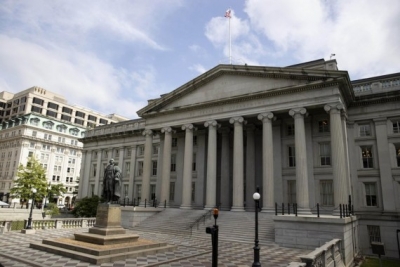The Bipartisan Policy Center (BPC), a Washington, D.C.-based think tank, warned that the US federal government is likely to hit the debt limit deadline and default on its debt obligations as soon as mid-October.
“Given the current pace of federal spending and revenues, we are reasonably confident that the X Date won’t arrive before the start of the fiscal year” on October 1, Shai Akabas, director of economic policy at BPC, said in a statement on FRiday, referring to the date when the federal government will no longer be able to pay its bills in full and on time.
Advertisement
“But the train could go off the rails shortly thereafter, and just because Congress has a bit more breathing room than previously expected, doesn’t mean lawmakers need to use it,” Akabas said, projecting that the debt limit “X Date” will most likely arrive between mid-October and mid-November, Xinhua news agency reported.
“Yields are rising on some short-term Treasury securities, indicating that financial markets are already concerned and that extended congressional negotiations are themselves costing federal taxpayers money,” he said.
Only timely legislative action can address the serious economic risks associated with failing to make good on US commitments, Akabas added.
The warning came after Treasury Secretary Janet Yellen said on Wednesday that her Department’s “extraordinary measures” to temporarily finance the government will likely be exhausted in October.
“Once all available measures and cash on hand are fully exhausted, the United States of America would be unable to meet its obligations for the first time in our history,” Yellen said in a letter to congressional leaders, urging Congress to raise or suspend the debt limit as soon as possible.
As part of a bipartisan budget deal enacted in August 2019, Congress suspended the debt limit through July 31, 2021.
After the debt limit was reinstated on August 1, the Treasury Department began using “extraordinary measures” to continue to finance the government on a temporary basis.
The debt limit, commonly called the debt ceiling, is the total amount of money that the US government is authorized to borrow to meet its existing legal obligations, including social security and medicare benefits, interest on the national debt, and other payments.











